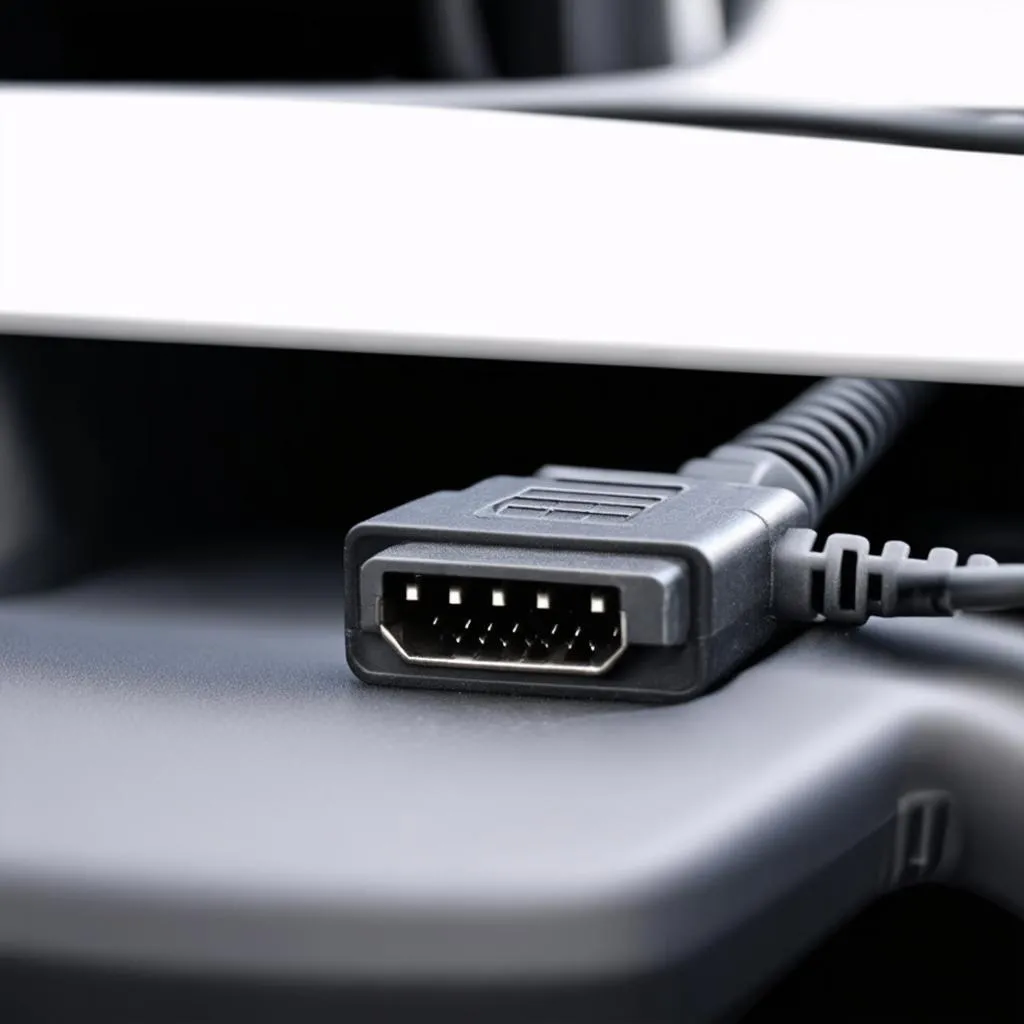Have you ever felt like your car was speaking a foreign language? Imagine you’re trying to understand a cryptic message from your car’s computer, but the only tool you have is a rusty wrench! That’s what it feels like when your GM OBD port isn’t cooperating.
This is a common problem that can leave you feeling frustrated and lost. Fortunately, by understanding the basics of OBD (On-Board Diagnostics) and common troubleshooting steps, you can regain control over your vehicle’s communication system.
Understanding GM OBD and Why it Matters
The OBD system is like your car’s personal detective, gathering evidence (codes) about its health and reporting them back to you. This information is crucial for mechanics, but it’s also incredibly useful for car owners who want to stay on top of their vehicle’s maintenance.
Think of it this way, when you’re feeling under the weather, you check your temperature, right? The OBD port provides a window into your car’s “temperature” by giving you access to a range of data, such as engine performance, emissions, and electrical systems. This data helps identify potential issues before they become major problems, saving you time, money, and maybe even a nasty surprise on the road.
Why Your GM OBD Port Might Not be Working
The Common Culprits:
-
Damaged OBD Port: Just like any electrical connector, the OBD port can get damaged, making it difficult or impossible for diagnostic tools to connect. This is often caused by wear and tear from plugging and unplugging devices or exposure to extreme weather conditions.
-
Loose Connection: Sometimes, the issue isn’t a damaged port but a loose connection. This can happen if the diagnostic tool isn’t inserted securely or if the wiring connecting the port to the vehicle’s computer system is loose.
-
Fused or Faulty Wiring: The OBD port is part of a larger network of wires that transmit data throughout your car. A blown fuse or damaged wiring can disrupt communication, making it seem like the OBD port itself is the problem.
-
Software Issues: Some GM models are known to have software glitches that can prevent the OBD port from communicating properly. This can sometimes be fixed with a software update, but it might require a visit to a dealership.
-
Battery Issues: A weak battery can cause various electrical problems, including issues with the OBD port.
How to Troubleshoot a Non-Working GM OBD Port
1. The Visual Inspection:
Start by carefully examining the OBD port. Look for any visible damage, bent pins, or corrosion.
2. Secure Connection:
Make sure the diagnostic tool is securely connected. Sometimes, a simple push or wiggle is all it takes to establish a connection.
3. Check for Fuses:
Locate the fuse box and look for any fuses related to the OBD port. This information is usually found in your owner’s manual or by searching online for your vehicle’s model year and make. Check if any fuses are blown. Replace any blown fuses with the correct amperage.
4. Clear the OBD Codes:
Sometimes, stored OBD codes can interfere with communication. Clearing the codes using a diagnostic tool might resolve the issue.
5. Check Battery Voltage:
A weak battery can cause all sorts of electrical glitches. Check your battery voltage using a voltmeter. It should be around 12.6 volts when the engine is off and around 14.2 volts when the engine is running.
6. Software Updates:
If you suspect a software glitch, consult your owner’s manual or a reputable online resource to see if there are any available software updates for your vehicle.
7. Consult a Professional:
If you’ve tried all of the troubleshooting steps above and your OBD port still isn’t working, it’s time to consult a qualified mechanic.
Common Questions About GM OBD:
- Can I use a cheap OBD scanner for GM vehicles? Yes, many affordable scanners can work with GM vehicles. However, some features might be limited. A high-quality scanner with a wider range of capabilities is highly recommended for advanced diagnostics.
- What is the difference between OBD1 and OBD2? OBD2 is the newer standard, introduced in 1996 for all vehicles sold in the United States. It provides more data and more detailed information than OBD1. Most GM vehicles produced after 1996 are equipped with OBD2.
- Does GM have a specific diagnostic tool? GM offers its own diagnostic tool called the “Tech2” which is a powerful tool for professional mechanics.
- What is the OBD port location on GM vehicles? The OBD port is typically located under the driver’s side dashboard, near the steering column. However, it’s best to consult your owner’s manual for the exact location in your vehicle.
Tips for Maintaining Your OBD Port:
- Regular Inspections: Inspect your OBD port regularly for damage or corrosion.
- Clean the Port: Clean the port with a small brush or compressed air to remove dirt and debris.
- Avoid Pulling Hard on the Diagnostic Tool: Plug and unplug your scanner carefully to avoid damaging the port.
A Final Thought:
Remember, maintaining your OBD port isn’t just about preventing communication breakdowns; it’s about keeping your vehicle running smoothly and ensuring its longevity. Just like a healthy body needs regular checkups, your car needs a clear and accurate communication channel to perform at its best.
 GM OBD Port
GM OBD Port
If you’re facing OBD-related issues with your GM vehicle, don’t hesitate to contact us at Whatsapp: +84767531508. Our team of experts is available 24/7 to help you diagnose and resolve the problem.
Related Articles:
We hope this guide has been helpful. Please share your experiences and questions in the comments below!